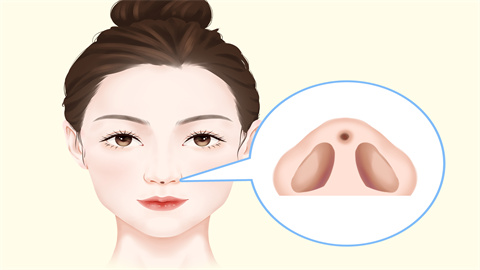What should I do if my nasal tip is still hard four months after rhinoplasty?
Generally, rhinoplasty refers to nasal augmentation surgery. The usual reference price for rhinoplasty ranges from 10,000 to 50,000 yuan per session, with visible improvement generally noticeable within 7 to 14 days. If the nasal tip remains hard four months after rhinoplasty, it may be related to factors such as the tissue recovery period, scar hyperplasia, displacement of the nasal tip implant, infection at the nasal tip, or necrosis of the nasal tip cartilage. Treatment options, including general management, medication, or surgical intervention, should be selected based on the underlying cause. If symptoms persist for a prolonged period, timely medical consultation is recommended. Detailed explanations are as follows:

1. Tissue Recovery Period
In the early stages after rhinoplasty, the nasal tissues require time to heal. During this recovery process, the aforementioned symptoms may appear. This is a normal reaction and no special treatment is required—regular observation is sufficient.
2. Scar Hyperplasia
As rhinoplasty is an invasive procedure, scar tissue may form during wound healing, leading to a hardened nasal tip. Usually, symptoms will gradually subside over time. However, if symptoms are severe and affect appearance, scar removal creams such as verapamil gel, asiaticoside cream, or combination heparin sodium and allantoin gel may be used according to medical advice.
3. Nasal Tip Implant Displacement
If an implant was used during rhinoplasty, hardening of the nasal tip may occur when the implant becomes displaced. Prompt removal and repositioning of the implant under medical guidance is recommended.
4. Nasal Tip Infection
If postoperative care is inadequate and inflammation or infection occurs, nasal tip swelling or even hardening may develop. This may be accompanied by symptoms such as localized redness and pain. It is recommended to promptly use medications such as fusidic acid cream, erythromycin ointment, or mupirocin ointment under medical guidance.
5. Nasal Tip Cartilage Necrosis
Cartilage necrosis is typically associated with insufficient postoperative blood supply. If not treated promptly, the cartilage may gradually deform and die, resulting in a hardened nasal tip, possibly accompanied by local swelling, redness, or ulceration. Prompt treatment using medications such as alprostadil injection, ginkgo biloba extract injection, or musk analgesic plaster for promoting blood circulation and removing blood stasis is recommended under medical supervision.
It is important to note that adequate rest should be ensured after rhinoplasty, and strenuous physical activity should be avoided. Additionally, frequent touching of the nose with hands should be avoided to prevent implant deformation or displacement.






